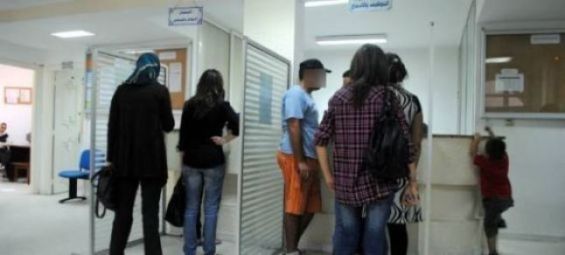Women in Morocco are 73% more likely to be inactive than men, estimated at 7.5%, reveals the Haut-Commissariat au Plan (HCP) in an intersectional study on women's participation in the Moroccan labor market.
This disparity is all the more marked among married women, whose probability of being inactive reaches 81.9% (3.1% for married men), than among young women aged between 25 and 34, with a probability of 79.4% (3.3% for young men), indicates the study carried out within the framework of the Technical Assistance Partnership - Expert Deployment Mechanism (PAT-MDE).
The results also show that the involvement of women and men in the labor market depends on their life cycle, highlighting distinct gender-related pathways and challenges. For women, inactivity probabilities take the form of a U-shaped curve, where they tend to fall from a probability of 83% for the youngest (aged 25-26) to a probability of 72% at the age of 43-44, then rise to 77.6%. For men, the probability of inactivity increases with age, rising from 5% for the youngest (25-26) to 24% for those aged 57-59.
Furthermore, education stands out as a key factor modulating female inactivity. Probability variations between education levels are more pronounced for women than for men. Thus, people with no diploma have the highest probability of inactivity, with significant differences between men (6.8%) and women (80.8%).
However, as the level of education increases, the probability of inactivity drops significantly by 42 points for women with a higher diploma, to 38.6%. For men, given their lower level of education, the probability of inactivity falls by just 1.7 percentage points.
Furthermore, an examination of inactivity probabilities at regional levels reveals the significant impact of geographical and socio-economic context on women's participation in the labor market.
In contrast to men, who have inactivity probabilities of no more than 8% across all regions, women's inactivity probabilities are much more dispersed. Indeed, women in the Laâyoune-Sakia El Hamra region are the most exposed to inactivity, with a probability of 87%. This is closely followed by the Oriental and Souss-Massa regions, where the probability of inactivity is 83% and 82% respectively.
The regions of Tangier-Tetouan-Al Hoceima, Casablanca-Settat and Rabat-Salé-Kénitra have the lowest, though still high, probabilities of inactivity, reaching 68%, 70.8% and 74.9% respectively.
This study aims to identify the multi-dimensional profiles of the women most likely not to participate in the labor market, shedding light on the interactions between the individual, social and contextual constraints they face.
It also highlights the complexity of constraints to women's participation in the Moroccan labor market through an intersectional gender approach, combining quantitative and qualitative research methodologies.




 chargement...
chargement...












